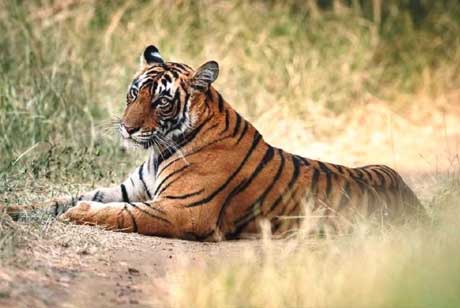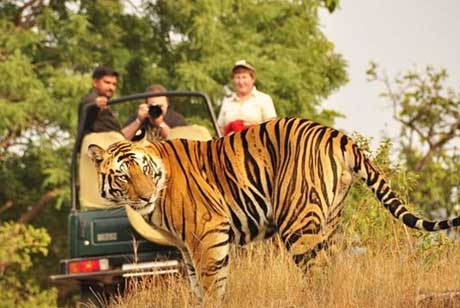Ranthambore National Park is situated in the Sawai Madhopur district of Rajasthan, approximately 175 km from Jaipur and 361 km from Delhi. Its easy accessibility from these major cities makes it a popular destination for visitors throughout the year. The national park is well known for its rich biodiversity, with a wide variety of plant and animal species. Among them, the Royal Bengal Tiger is the main attraction. Frequent tiger sightings draw wildlife lovers who often choose to go on multiple safaris during their visit. The most ideal time for wildlife sighting is from October to June.
A Comprehensive Analysis of the Best Time to Visit Ranthambore
Tourists and visitors need to know about the most effective time for wildlife sighting. To make the most of the jeep or the canter safari experience in Ranthambore National Park, it is crucial to know the best time to visit the place.
| Season | Months | Tourist Season | Accessible Zones |
|---|---|---|---|
| Winter | November - February | Peak Season | 1-10 |
| Summer | March - June | Shoulder Season | 1-10 |
| Monsoon | July - September | Off Season | 6-10 |


[Please note that, regardless of the season, the safaris in Ranthambore are conducted only in the morning and evening slots. No vehicles are allowed to continue the safari rides beyond the stipulated hours stated by the forest department.]
Ranthambore in Winter - The Best Time to Visit (November to February)
November to February is the winter season in Ranthambore National Park. This duration is the most favourable time of the year, when tourists prefer to visit the national park in a comfortable season. The cool weather makes the Ranthambore safari more exciting. The forest, brought back to life by recent rains, is full of green plants, creating a beautiful and magical atmosphere. Additionally, the park becomes a haven for many migratory birds, offering a delightful experience for bird enthusiasts.
It is the most comfortable time of the year when visitors can enjoy both the morning and evening safaris without any inconvenience. If planning a visit between late December and early January, it is advisable to carry proper winter clothing to stay warm in the forest's wilderness.
Ranthambore in Summer - March to June
The summer season, from March to June, is comparatively less favoured by visitors due to the intense heat. As Ranthambore Park is located near the Thar Desert, daytime temperatures can soar, often reaching up to 48°C. While the scorching sun makes it challenging for most people to explore the forest during this period, those who can endure the heat might consider visiting for two key reasons:
First, the national park is less crowded during the summer
Second, there is a greater likelihood of spotting the majestic tiger, particularly near the park's water bodies.
However, it is essential to be well-prepared by bringing sunscreen, scarves, and lightweight, long-sleeved cotton clothing to protect yourself from the harsh sun.
The early morning safaris that usually function from 7:00 am - 10:30 am are comparatively less challenging than the late afternoon safaris, 2:00 pm - 5:30 pm.
Ranthambore in Monsoon - July to September
Monsoon is generally regarded as the off-season in Ranthambore National Park because the core zones (Zones 1 to 5) remain closed during this period. However, the buffer zones (Zones 6 to 10) stay open from July to September, allowing limited tourist activities to continue. Visitor numbers are usually lower during these months, but wildlife sightings are also less frequent. Due to widespread water accumulation across the park, heavy rainfall may occasionally lead to the temporary suspension of safaris even in the buffer zones.
| Month | Avg. Minimum (°C | Avg. Maximum (°C) |
|---|---|---|
| January | 10 | 22 |
| February | 13 | 27 |
| March | 18 | 32 |
| April | 25 | 40 |
| May | 28 | 41 |
| June | 28 | 29 |
| July | 27 | 33 |
| August | 25 | 31 |
| September | 25 | 34 |
| October | 22 | 34 |
| November | 15 | 30 |
| December | 22 | 27 |